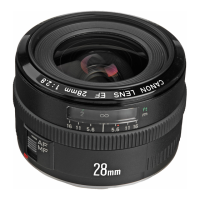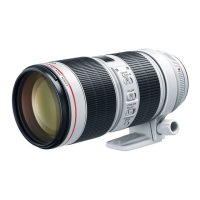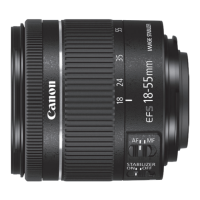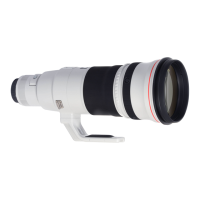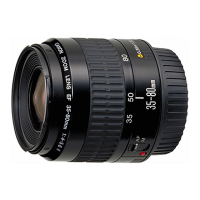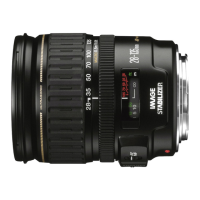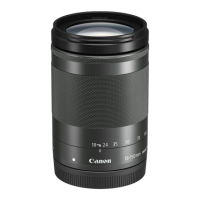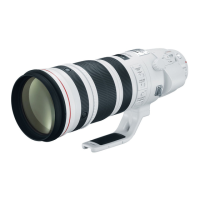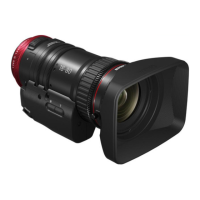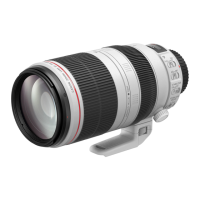
Do you have a question about the Canon EF100-400mm f/4.5-5.6L IS II USM and is the answer not in the manual?
| Focal Length | 100-400mm |
|---|---|
| Maximum Aperture | f/4.5-5.6 |
| Minimum Aperture | f/32-40 |
| Lens Mount | Canon EF |
| Format Compatibility | Full-Frame |
| Maximum Magnification | 0.31x |
| Optical Design | 21 Elements in 16 Groups |
| Autofocus | Yes |
| Filter Size | 77 mm |
| Angle of View | 24° to 6° 10' |
| Minimum Focus Distance | 3.2' / 98 cm |
| Diaphragm Blades | 9 |
| Image Stabilization | Yes |
| Dimensions | 3.7 x 7.6" / 94 x 193 mm |
| Weight | 3.46 lb / 1570 g |
Key features including IS, Super UD elements, ASC, fluorine coating, and USM.
Features like manual focus after AF, adjustable zoom feel, hood filter window, and tripod mount.
Circular aperture for soft focus and compatibility with extenders.
Tight seal structure for dustproof and drip-proof performance.
Precautions for condensation, heat exposure, and handling during mounting.
Warnings against looking at or pointing the lens at the sun.
Firmware updates, usage notes, and instruction conventions.
Device complies with FCC Part 15 and IC rules.
Measures to correct potential interference with radio communications.
Diagram and labels for all major lens parts and controls.
Identification of Focus Mode, Stabilizer ON/OFF, and Stabilizer Mode switches.
Details on the lens mount's rubber ring and electrical contacts.
Guidelines for protecting lens surfaces and cleaning contacts.
Instructions for correctly attaching the lens dust cap.
How to use the focus mode switch for autofocus and manual focus.
Performing manual focus adjustments after autofocusing.
Using the switch to limit focus range for faster AF.
How to zoom the lens by rotating the zoom ring.
Warning about potential focus shifts when zooming after focusing.
Customizing the zoom ring's smoothness or tightness.
Steps to turn IS on and select between modes 1, 2, and 3.
Explanations of what each IS mode corrects.
How to press the shutter button to activate IS based on mode.
When to use IS for low light, no flash, and uncertain footing.
Guidance on using IS modes for different shooting scenarios like panning.
When IS is ineffective (subject movement, Bulb) and power consumption.
Warning against removing lens during IS and camera model incompatibilities.
Advice on using IS with tripods and custom camera functions.
Understanding the infinity mark for focus compensation.
Using the infrared index for monochrome infrared film.
Function of the hood and how to attach it correctly.
How to remove the hood and reverse-mount for storage.
Warning about vignetting and proper handling during attachment.
Using the hood's window to adjust a polarizing filter.
Procedure for filter adjustment and recommendation to close window.
Step-by-step instructions for mounting the tripod collar.
Step-by-step instructions for removing the tripod collar.
Caution against using internal screw thread and ensuring secure tightening.
Using the orientation locking knob for vertical/horizontal shots.
Specifications for EF1.4x and EF2x extenders, including focal length and aperture.
Correct order for attaching extenders to the lens and camera.
Correct attachment order and potential errors.
AF issues with extenders and camera models that support it.
Rules for using extenders, such as not using multiple at once.
Attaching filters, polarizing filters, and close-up lenses.
Using extension tubes for magnified shots and their specifications.
Focal length, aperture, lens construction, and angles of view.
Minimum focus distance, max magnification, field of view, and dimensions.
Weight, hood model, lens cap, and case information.
Clarifications on aperture, lens length, and data measurement standards.
